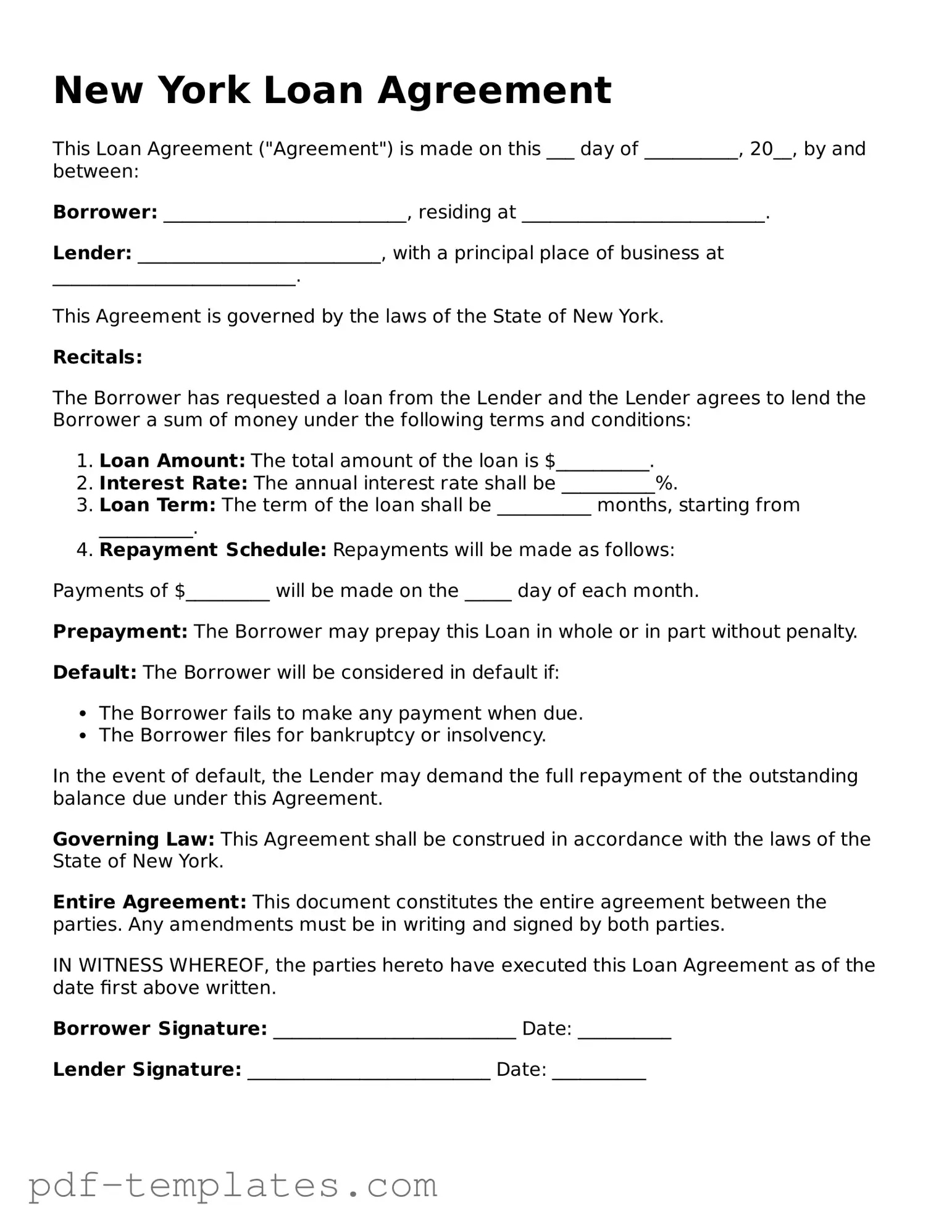The New York Loan Agreement form shares similarities with a Promissory Note. A Promissory Note is a written promise to pay a specified amount of money to a designated party at a predetermined time. Like the Loan Agreement, it outlines the terms of the loan, including the interest rate and repayment schedule. Both documents serve to formalize the borrower-lender relationship, ensuring that the obligations are clearly defined and legally enforceable.
Another document akin to the Loan Agreement is the Mortgage Agreement. This document is used when real property is involved as collateral for a loan. Similar to the Loan Agreement, it details the terms of the loan, including the amount borrowed and the repayment terms. However, the Mortgage Agreement also includes provisions related to the property, such as the rights of the lender in case of default, providing additional security for the loan.
In real estate transactions, understanding the various legal documents is crucial for successful property transfers, particularly within California where forms like the California Quitclaim Deed play an essential role. This document allows for the swift transfer of property interests without the extensive guarantees associated with other deeds, making it especially useful in familial situations or to rectify title issues. For those seeking a comprehensive understanding of property-related documentation, it's advisable to explore All California Forms that can offer additional insights and clarity.
The Security Agreement is also comparable to the Loan Agreement. This document is used when personal property is pledged as collateral for a loan. Like the Loan Agreement, it specifies the terms of the loan and outlines the rights and responsibilities of both parties. The Security Agreement ensures that the lender has a claim on the collateral in case the borrower fails to meet their obligations.
A Credit Agreement is another document that resembles the Loan Agreement. This agreement outlines the terms under which a lender extends credit to a borrower. Similar to the Loan Agreement, it details the amount of credit, interest rates, and repayment terms. However, a Credit Agreement may also include additional provisions related to fees and covenants that the borrower must adhere to throughout the duration of the credit line.
The Loan Application is also related to the Loan Agreement. While the Loan Application is a document that the borrower submits to request a loan, it provides essential information that the lender uses to assess the borrower's creditworthiness. The Loan Agreement, on the other hand, is the final document that formalizes the terms of the loan once the lender has approved the application.
Another similar document is the Loan Disclosure Statement. This document provides borrowers with important information about the loan terms, including the annual percentage rate (APR), fees, and total repayment amounts. Like the Loan Agreement, it aims to ensure transparency and understanding of the loan terms before the borrower commits to the agreement.
The Forbearance Agreement also bears similarities to the Loan Agreement. This document is used when a lender agrees to temporarily reduce or suspend payments due to the borrower’s financial hardship. It outlines the terms of the forbearance, including how long the reduced payments will last and what the borrower’s obligations will be afterward. Both documents seek to provide a clear framework for the borrower’s obligations while addressing their financial situation.
Finally, the Loan Modification Agreement is comparable to the Loan Agreement. This document is used when the terms of an existing loan are changed, often due to the borrower’s request for more favorable conditions. Like the Loan Agreement, it specifies the new terms, including interest rates and repayment schedules. The Loan Modification Agreement serves to protect both parties by clearly stating the revised obligations and expectations.
